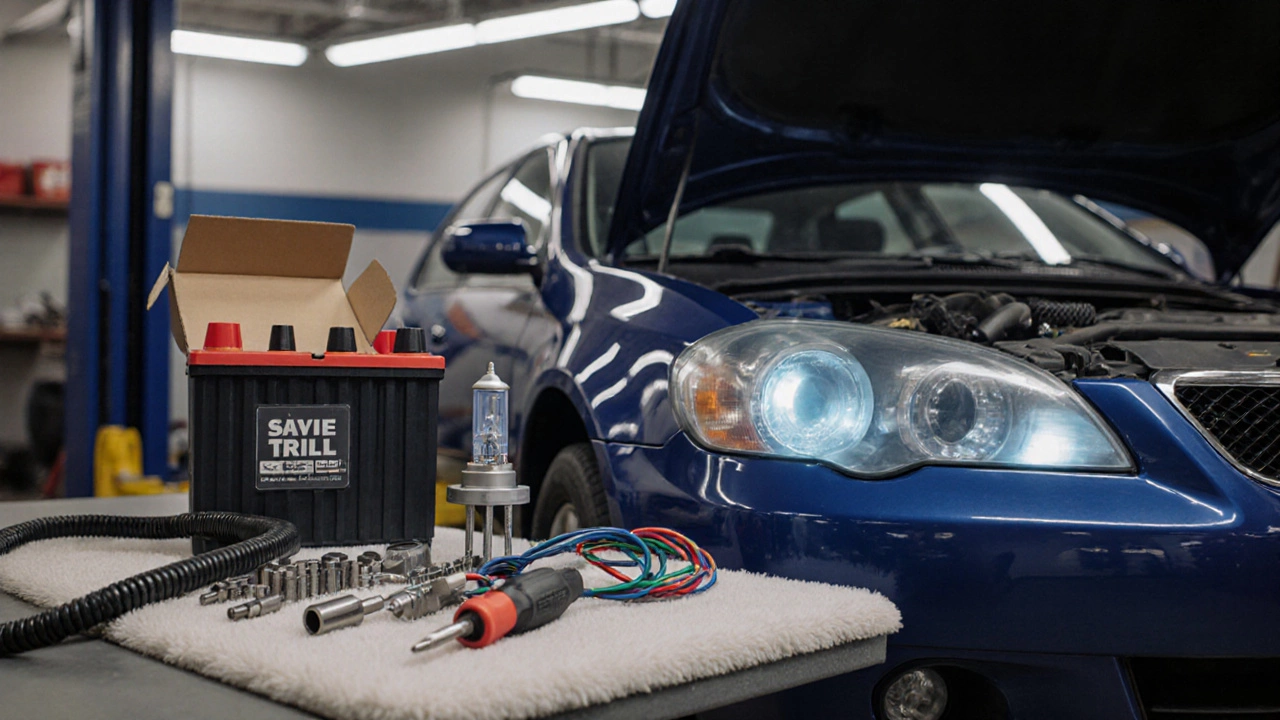LED headlights installation
When working with LED headlights installation, the process of swapping a vehicle's stock lamps for LED units that meet road‑legal standards. Also known as LED headlamp retrofit, it delivers brighter, more efficient light while cutting power draw. LED headlights installation isn’t just a visual upgrade; it ties directly to vehicle lighting regulations, the set of laws that dictate lamp color, intensity and placement on public roads. These rules shape whether a conversion is legal, so understanding them is the first step. Most drivers start with halogen headlights, the traditional incandescent units that many cars ship with. Halogen bulbs produce less light, run hotter and consume more wattage than LEDs, which is why the swap is popular. However, you can’t just unscrew a halogen and stick an LED in its place; you need a headlight conversion kit, a package that includes LED modules, wiring adapters and often a ballast or driver to match the car’s electrical system. The kit bridges the gap between the old system and the new LEDs, ensuring the vehicle’s ECU recognizes the change and that the lights flash at the correct frequency. This relationship—LED headlights require a proper conversion kit and must obey lighting regulations—forms the backbone of any successful installation.
Key considerations for a legal and reliable LED swap
First, check your local road safety compliance, the standards that ensure modifications don’t endanger other drivers or reduce your own visibility. In the UK, for example, the Department for Transport mandates that LEDs meet specific luminance and beam pattern criteria; similar bodies exist in Australia, the US and EU. If the LEDs you choose are not certified, you risk fines or having to revert to stock lamps. Second, verify that the headlight conversion kit you purchase lists the exact make and model of your car; mismatched lenses can cause glare or uneven lighting, which not only looks bad but can be illegal. Third, pay attention to the wiring harness; a proper harness preserves the vehicle’s CAN‑bus communication and prevents error codes that could trigger a check engine light. Many kits include a ‘decoder’ that tells the car’s computer the new LEDs are present, maintaining vehicle lighting regulations compliance. Finally, test the installation at night on a safe, empty road. Check for proper aim, clear cut‑off lines and the absence of stray light that blinds oncoming traffic. Adjust the aim using the adjustment screws on the housing; most kits provide a torque spec to avoid over‑tightening. After the tweak, confirm that both low and high beams work as intended and that the LEDs don’t flicker—a sign of a bad connection or an undersized power supply.
With those steps in mind, you’ll have a solid foundation for turning your halogen setup into a brighter, greener LED system that stays within the law. Below you’ll find a curated list of articles that break down everything from legality across different countries to buying the right conversion kit, troubleshooting common issues, and maximizing the safety benefits of your new lights. Whether you’re a first‑time DIYer or looking to fine‑tune a professional install, the resources ahead will give you the actionable insight you need to finish the job with confidence.
Learn the exact steps, tools, and legal checks for installing LED headlights safely. Includes wiring tips, common mistakes, a comparison table, and FAQs.

